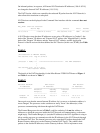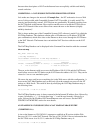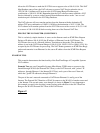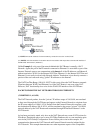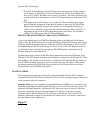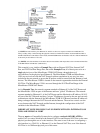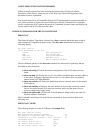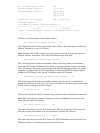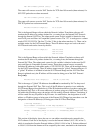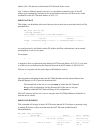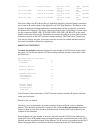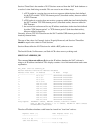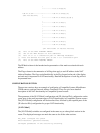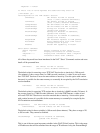TCP SYN timeout period (sec.): 180
The router will remove an active NAT Session for TCP after 180 seconds (three minutes) if a
SYN TCP packet has not been answered.
TCP FIN timeout period (sec.): 180
The router will remove an active NAT Session for TCP after 180 seconds (three minutes) if a
FIN TCP packet has not been answered.
Entered Internal range(s): 10.5.3.0/27
This is the Internal Range to/from which the Network Address Translation software will
translate the IP address in packets destined for, or coming from, the Internal NAT Network
through the Internal NAT Port. The subnet mask syntax for this variable is identical to that
used for IP ports and filters in Compatible Systems routers. The "/27" is analogous to a subnet
mask of 255.255.255.224. The first 27 of the 32 bits in the subnet mask are 1's. There can be
multiple entries for the NAT Internal Range. These IP address ranges are local to the user's
NAT Network and can be chosen by the user.
Entered External range(s): 198.41.9.219
198.41.9.195
198.41.9.194
This is the External Range to/from which the Network Address Translation software will
translate the IP address in packets destined for, or coming from, the Internet through the
External NAT Port. The subnet mask syntax for this variable is identical to that used for IP
ports and filters in Compatible Systems routers. These three external ranges are actually
individual IP addresses with subnet masks of 255.255.255.255. There can be multiple entries
for the NAT External Range. These IP address ranges must be "global" Internet addresses. If
a "global" IP address is included in both the NAT External Range and the NAT PassThru
Range (explained next), the IP address will be treated as being part of the NAT External
Range only.
Entered Pass Thru range(s): 198.41.9.{205−210}
This is the range of "global" IP addresses that will not be translated by NAT as they travel
through the External NAT Port. This is only if the IP address in question is not within the
NAT External Range (described above). If the IP destination address of packets coming into
the External NAT Port, or IP source addresses of packets going out of the External NAT Port,
fall within this IP address range, the packet will not undergo Network Address Translation. It
will be routed like any IP packet in any IP router. As stated before, the designation of an IP
address or IP address range as being part of the External NAT Range has precedence over the
designation of those IP address(es) as being part of the NAT PassThru Range.
[ NAT Map Database ]
Total Number of Entries in NAT Map Database: 2
−−−−−−−−−−−−−−−−−−−−−−−−−−−−−−−−−−−−−−−−−−−−−−−−−−−−−−−−−−−−−−−−−−
Internal External
LineNo. <IPaddress[/Mask or :Port]> −> <IPaddress[/Mask or :Port]>
1 −>
2 −>
This section of the display shows the one−to−one address translation pairs entered in the
NAT software. Each line of the display is read as the Internal Address (10.5.3.20, in line 2)
which is translated to/from the External Address (198.41.9.194, in line 2). Packets addressed
to 198.41.9.194 from the Internet will be accepted by the router, translated to the destination



